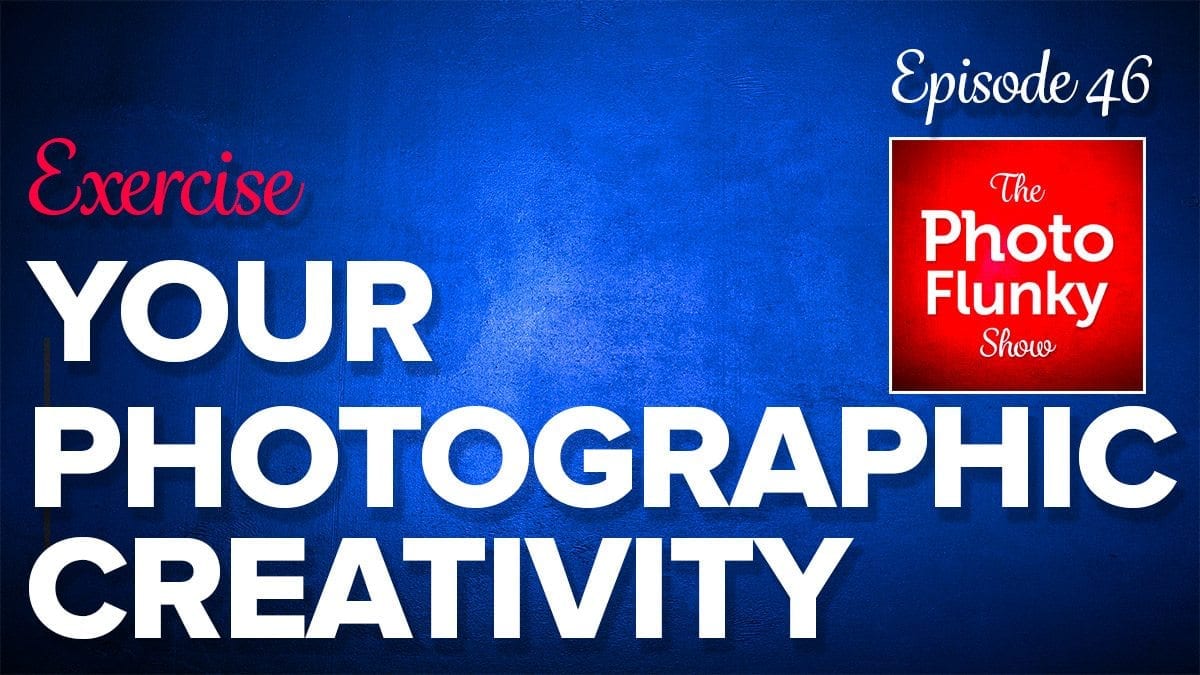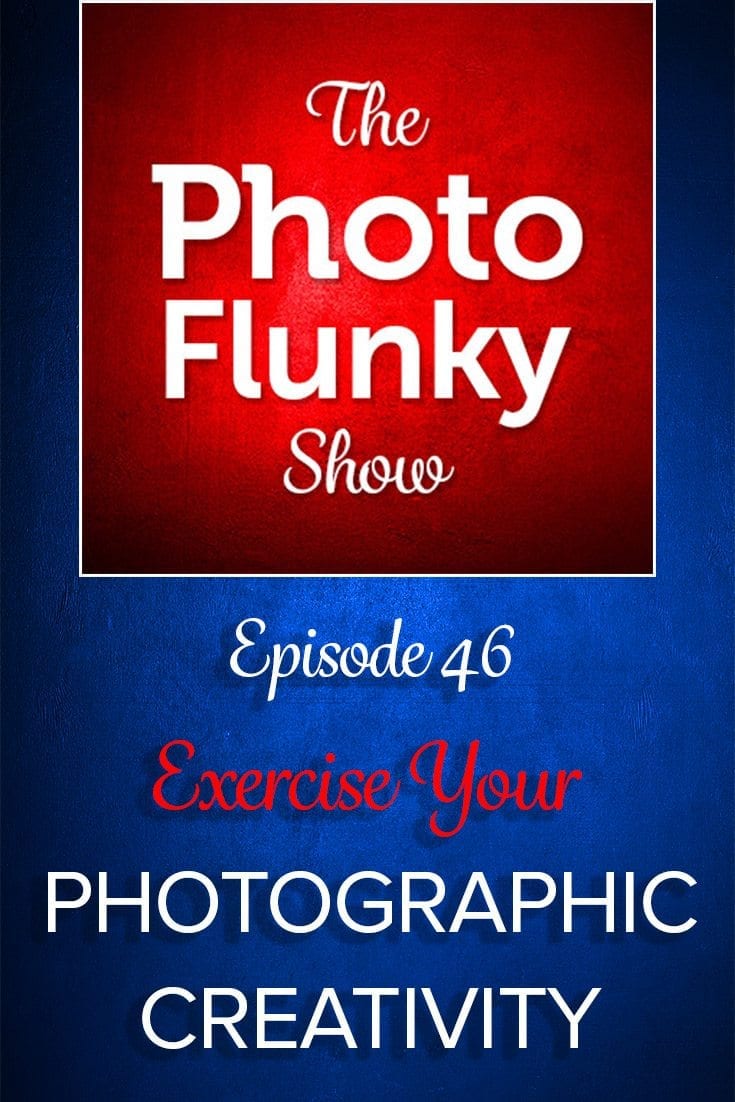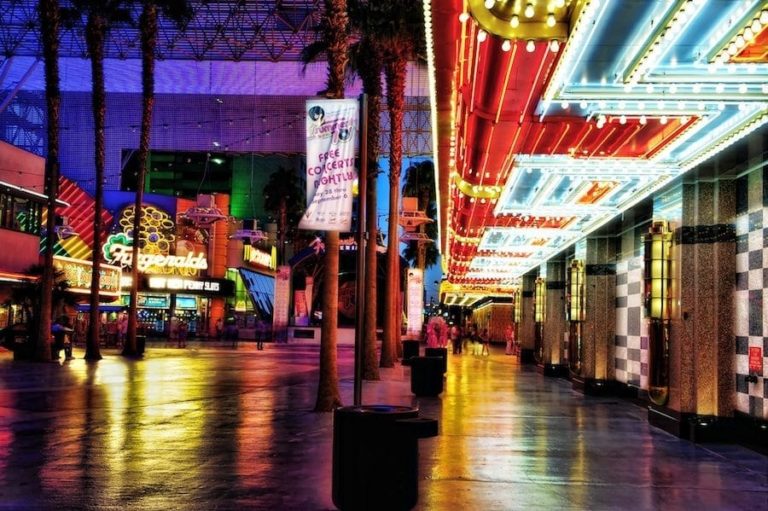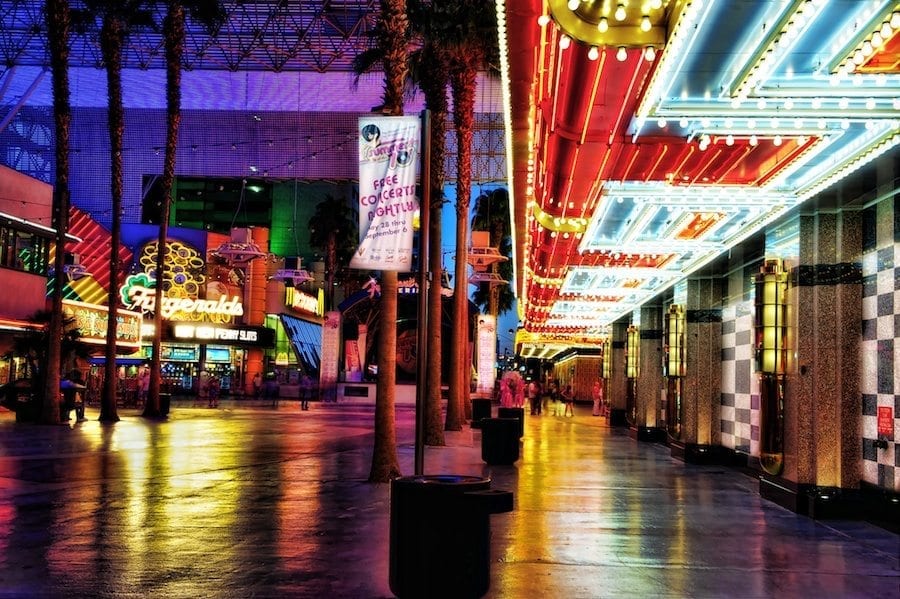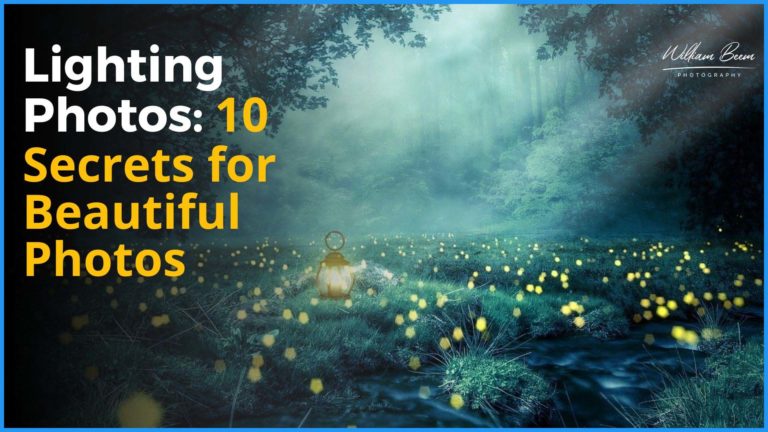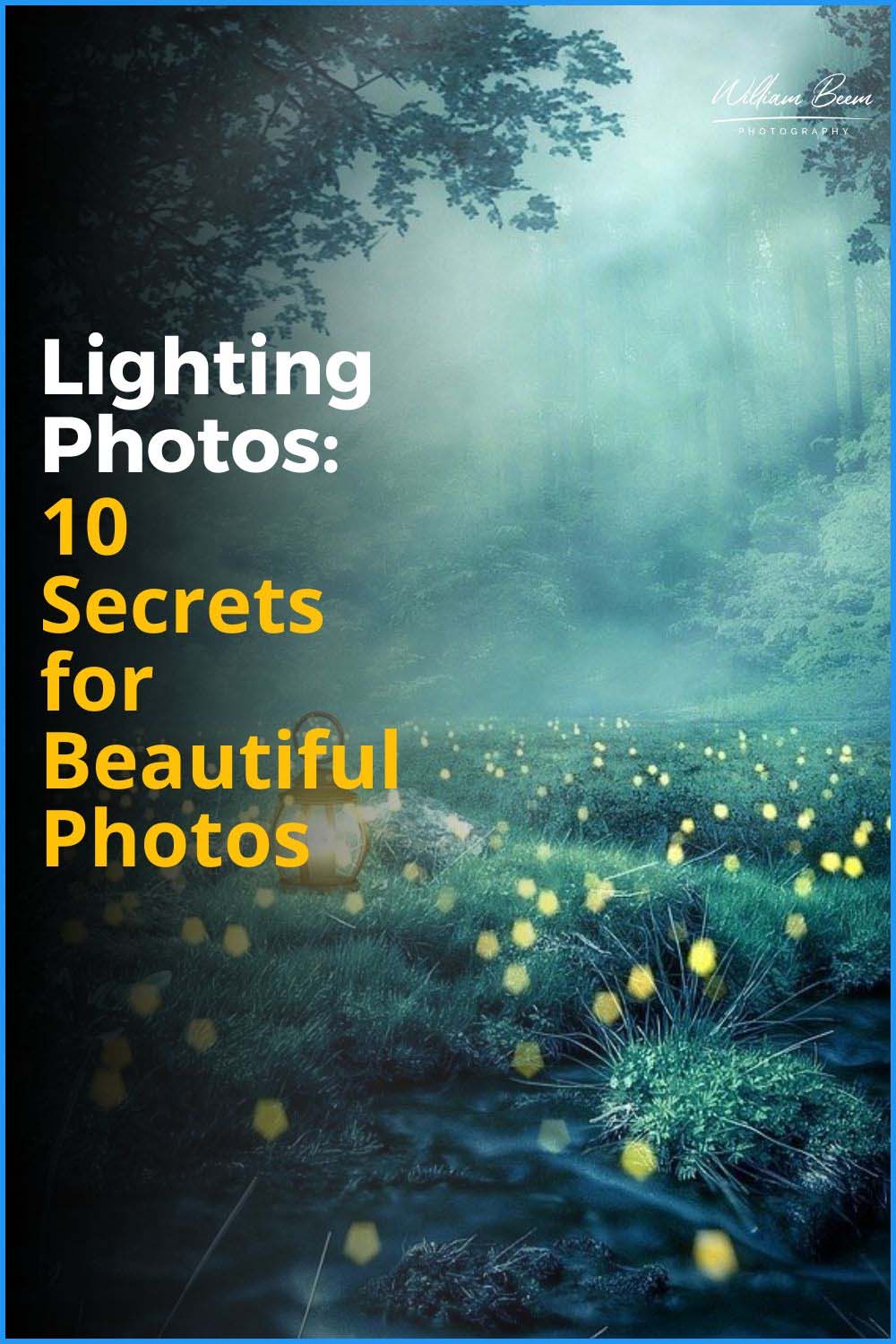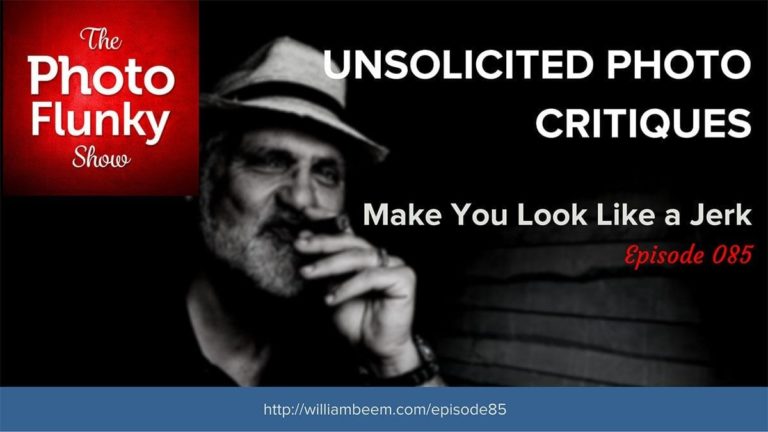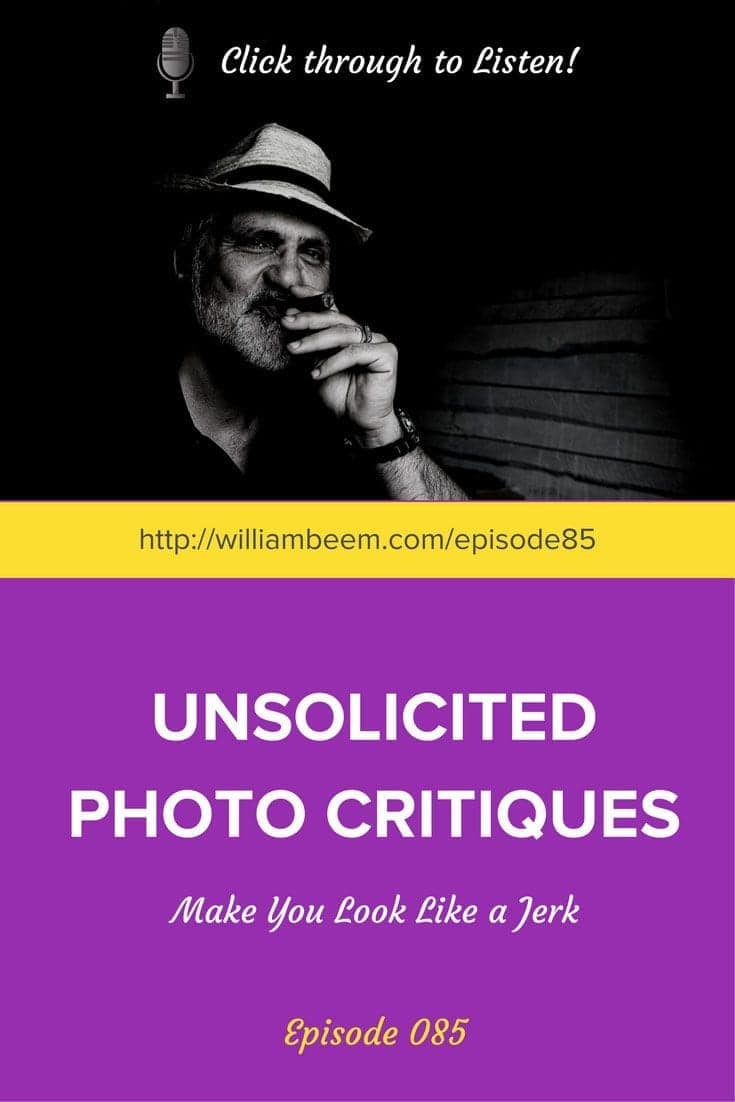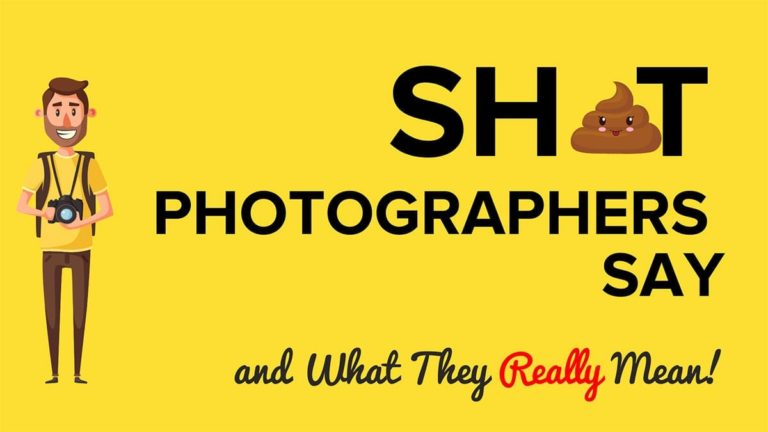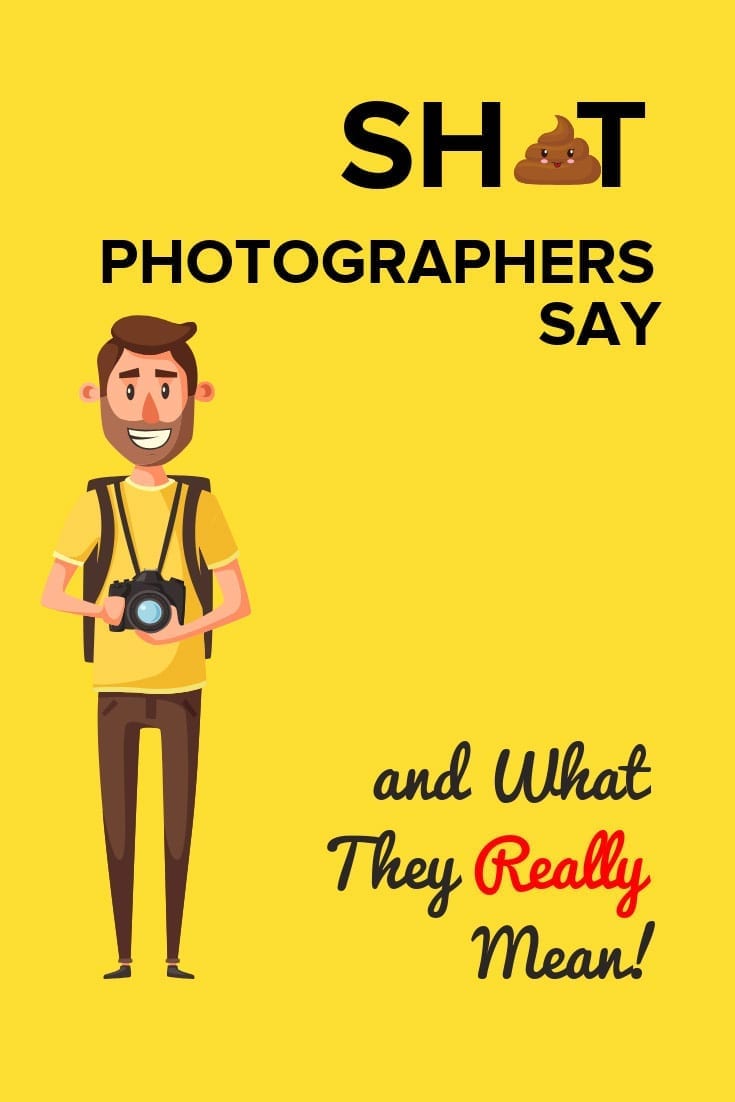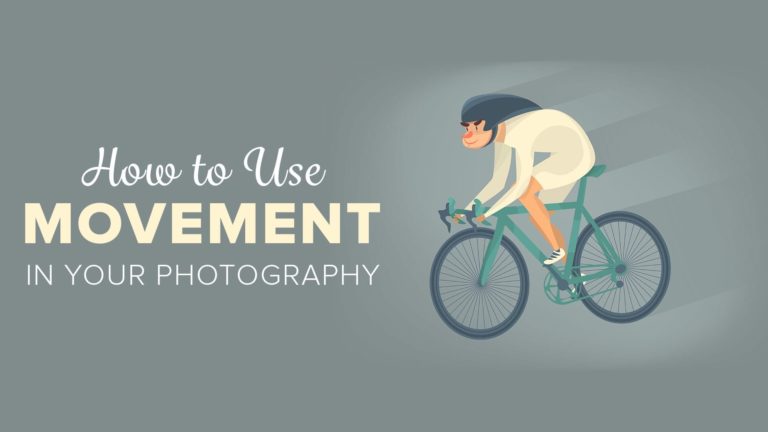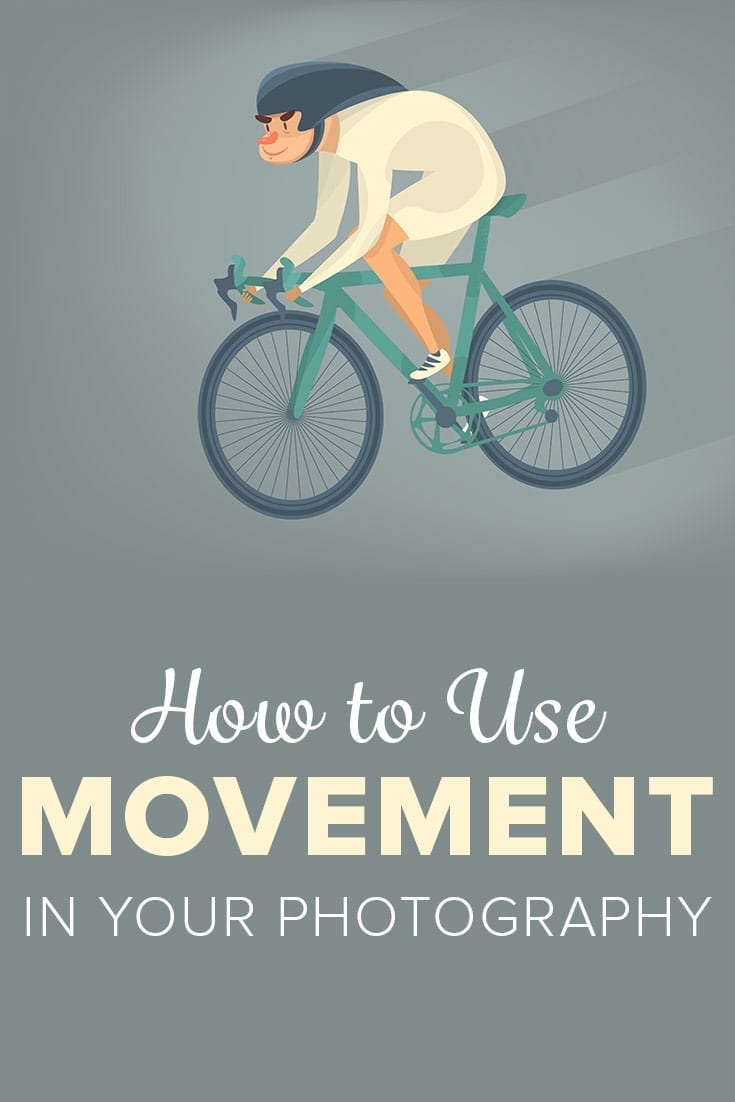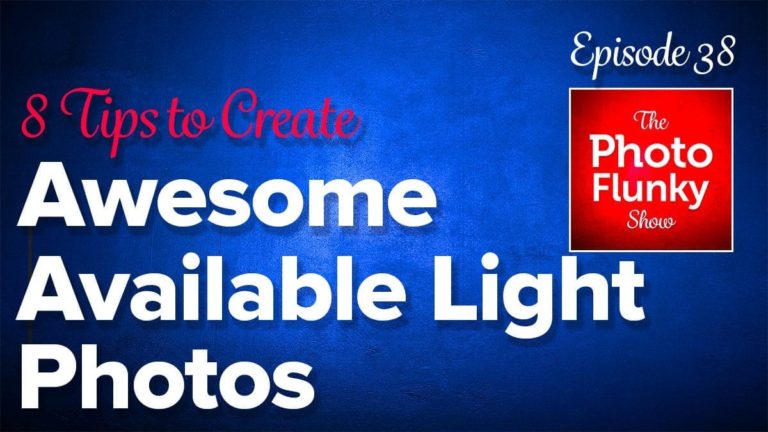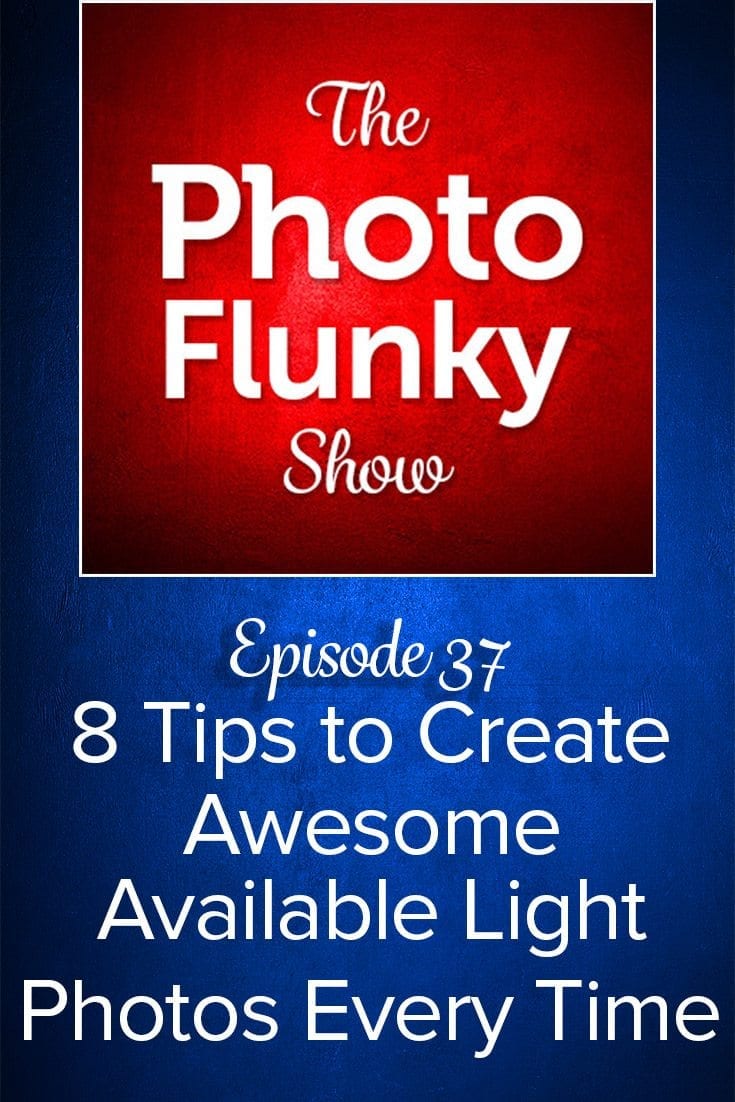Affiliate Disclosure: We earn a commission if you purchase through one of our links at no additional cost to you.
Your Photographic Creativity Needs Some Exercise
Thank you for listening to The Photo Flunky Show. We really appreciate you.
There are a lot of technical aspects to your photography. It’s good to practice to make sure you know your camera settings and exposures.
However, creating a technically valid photo isn’t the same as creating an interesting photo. You need both your technical capabilities and your photographic creativity to make interesting images.
In today’s episode of The Photo Flunky Show, we’re discussing some proven tips to help you get into a creative frame of mind.
Use the Power of Story
If you’ve listened to previous episodes, you’ve heard me say that I want a story for my photos. I’ll go into more detail in this episode and list some of the different ways you can use storytelling for a photo or collection of photos.
One of the tips I share is to stop thinking of yourself as a photographer and start thinking of yourself as a storyteller. The camera is just a tool you use to tell those stories.
Once you make that leap, it changes the way you approach your photography and really drives your photographic creativity with a new sense of purpose.
I hope you enjoy this show and would love to have your feedback in the comments below.
KelbyOne is the perfect resource for anyone looking to improve their photography skills.
Whether you're a beginner or a seasoned pro, there's something for everyone at KelbyOne. They offer courses on all aspects of photography, emphasizing Photoshop and Lightroom for post-processing.
Professional photographers, led by Scott Kelby, offer a new course every week, so you can always keep your skills fresh. And best of all, membership gives you access to everything they offer so that you can learn at your own pace and improve your photography game.
KelbyOne offers Monthly and Annual pricing plans, so the plan that works best for you.
Get 10% Off the Pro Annual Subscription with Code WBEEM10, Only at KelbyOne!
Coupon Code: WBEEM10
Get 10% Off the Pro Monthly Subscription with Code WBEEM10M, Only at KelbyOne!
Coupon Code: WBEEM10M
- Excellent training for photography and photo editing
- Wide range of topics covered
- Multiple instructors
- Discounts and Perks for KelbyOne Pro members
- Free plan available
- You can purchase a course without a membership
- A few instructors are better at doing than teaching
- With years of developing courses, some are out of date.
Subscribe to The Photo Flunky Show
Thank you for listening to The Photo Flunky Show. Make sure you get every episode by subscribing.
iTunes – https://williambeem.com/itunes
Stitcher – https://williambeem.com/stitcher
Google Play – https://williambeem.com/googleplay
Blubrry – https://williambeem.com/blubrry
Social Media Links
We love seeing your photos and keeping in touch with you on social media. Here’s where you can find us.
Transcript
THE PHOTO FLUNKY SHOW: Episode 46
Welcome to the Photo Flunky Show, Episode forty-six.
On today’s show we are going to try and give you some ideas to help you exercise your photographic creativity.
William: Hi, thank you very much for listening to the show. We appreciate you. My name is William Beem and I am not afraid of heights, but I am afraid of falling.
Lee: No high places, therefore.
William: No, it’s not a matter of height. If I am safe and secure up someplace high, I don’t mind it. But I could be standing on a ledge six inches off the ground and if there is not enough room for me to balance myself I’m really deathly terrified of falling.
Lee: I think that comes with age as well. I am more afraid of falling now.
William: Oh, no I was afraid like that as a kid, but it’s one of those weird things. It’s not so much the height. It’s the fall. So I am never going to be a paratrooper.
Lee: OK. Well here’s my weirdness. I don’t like milk on my cereal.
William: That is weird.
Lee: I cannot have anything that goes mushy and the milk will make it go mushy so I put yogurt in my bowl and the cereal goes on top of it, but as soon as it mixes it has to be crunchy.
William: You know that cereal stays crunchy if you just eat it quickly.
Lee: I don’t like it wet. And I don’t like milk.
William: It’s a European thing.
Lee: I don’t know.
William: Tové doesn’t like milk.
Lee: That’s because of her mother.
William: Well, it’s a weird thing then.
OK before we get started, I want to let you know about Aurora HDR 2017. This came out just a few weeks ago. But there is good news. If you want to save ten per cent on it, my coupon code is coming active again. So you can use the coupon code BEEM and to get there, just go to williambeem.com/macphun, enter the coupon code BEEM when you check out and save ten per cent. Honestly, I am really digging Aurora HDR 2017. It is much nicer than the old one and I love the old one.
It’s one of those things where I can go and do pretty much everything I need to do. I’d say the only thing I’m not really doing in there is spot removal. But I can take just a few of my brackets or a single image and put it in there and I can really tweak them to taste and it doesn’t take a long time.
When I was doing HDR before I would spend an hour or two hours or longer just, not only running things through other post processing software and then blending in specific parts of the images from other brackets just to make everything look perfect. I don’t have to do that anymore. Let’s say less than ten minutes from start to finish and I’m done and I’m satisfied with the results. So honestly, if you are into HDR, take a look at Aurora HDR 2017 by Macphun. Like I said, I can save you ten per cent with my coupon code BEEM and you can get there at williambeem.com/macphun.
I get a few extra credit points for that, no extra cost for you and as a matter of fact it saves you money. So who couldn’t be happy with that?
We had this little idea in mind. It’s almost an extension from what we were talking about last week. We were talking about things that go through your mind. What you are thinking about when you are taking your photos. We wanted to take that a step further.
We are talking about your photographic creativity. What drives you as a photographer and how are you going to bring out your creative side?
Lee, I know for you, you like photography solely for the creativity.
Lee: I do.
William: Not only is it an escape, but it lets you exercise a part of your brain that during your normal day you don’t normally get to work with.
Lee: That’s true. I call it my balancing act. It’s what keeps me nice and well rounded.
William: Why is your creativity so important to you?
Lee: It’s an outlet for me. It’s a way that I can express myself – what I’m thinking, what I’m feeling and also I’ve sometimes got a non typical way of looking at things and this is my way of expressing it in a fun way. I also have my controversial views on life and my different takes on things. Sometimes they can come across as – I don’t want to say offensive – but it has been known to upset people, whereas when you see things differently creatively, it is interesting. You don’t upset people by it. You draw them in to come and have a look at it and it’s something that I like. As I say, it’s another way of balancing me out.
William: I think if you look back at art history and I really don’t want to go down that path too much, sometimes art does upset people. I mean it draws in a certain audience and maybe it repels another audience because they think, oh you just shouldn’t show that to the public or you just don’t do that sort of thing. Whatever the case may be, that has happened through the ages.
I am not really worried about that so much when I talk about photographic creativity. I’m not trying to tell people that they should go out and be offensive as a means of being creative. But I also think being creative means that you shouldn’t necessarily be afraid to show something that perhaps some people may not like. It is true to what you really believe and feel.
Lee: I agree on that. You’ve seen with some of my post processing techniques and sometimes the way that I do things or disregard things. If I don’t feel that it works for me or that it makes my end result better for my purposes, I am not going to do something just because somebody told me so. In fact if people start harping and annoying me enough by hammering something down my throat, I am purposely going to try and do the opposite just to see for myself if I might like it. It intrigues me.
Sometimes it’s good to just not let other people issue instructions like the be-all and end-all and contain you in this little isolated box where you feel like you have to do this or it’s wrong.
William: Well that’s the thing. Being creative also means being an individual. If you are listening to what someone else tells you are the rules for creativity, then you are not really being creative. You are just simply following the rules again and that is no different than using technical expertise in your photography. I mean let’s look at it. Why do you want to exercise your photographic creativity? Honestly, you want to take better photos. You want to take more interesting photos, but maybe you don’t necessarily know how to get there and it’s like playing guitar. You practise. Playing piano: you practise. And you play and you play and little by little you learn things.
You don’t learn it all at once. And there may be a couple of moments where you go, aha! I got this!
But that is not the only thing. You have to practise and keep doing it and keep doing it. You do it a couple of hundred times and then you start to understand nuances in ways that you didn’t.
Or you look back at what you’ve been doing and say, I’ve been doing it all wrong.
Lee: Or maybe it’s just time for a change. I mean that’s what happened to me. I got bored of coming home with the same things.
William: And that’s what makes progress: exercising your creativity. You look at the same things, you do the same things over and over again and you realize that there’s got to be more to photography and creativity than this and your creativity says, what if? Why don’t I do something different? And it is satisfying to explore your creativity, even if you are unhappy with the results that you get. Just the act of being creative is self satisfying. That’s why you said you are into photography in the first place.
Lee: It is.
William: Exercising, like I said, is what helps you grow as an artist. It is going to help make you a better person inside because you can come up with results that other people aren’t doing because you are exploring your own individuality. And even if you’re shooting for commercial purposes or headshots or something like that, your creativity can still show up.
That is why people will seek you out. You have a unique take on life and a unique take on your photos because you are exploring your creativity. Even if you are not showing it in your work, you want don’t want to be creative with a customer who expects a certain result, but you have personal projects. You want to be creative and maybe that gives you ideas or tools that you can use to bring back to work.
Lee: Yes, and that leads to another good point with something that you just said there. Not every photo has to be wildly different and creative.
William: No, certainly not. There are some people in fields where they are expected …. Well let’s face it, in some cases you are expected to document things. You start off just documenting things. You are going off and saying this is what happened someplace. But then after a while, you realize that you can document things with a more interesting point of view.
By changing your focal length, by shooting something in a reflection rather than shooting it straight on, by changing the way the light hits the subject or changing your angle around the subject, there are a lot of ways that you can shoot the same thing and tell the story, but allow your creativity to show up.
Lee: Yes, that’s true. And sometimes you can’t plan it. Sometimes you just happen to see it, but you can train your eye to see things differently.
William: That’s what I’m saying. You have to be open to the idea of being creative so that you can allow opportunities or recognize opportunities when they appear.
Let’s say we are talking about exercising. Not necessarily that you are doing something for an assignment, but this is exercising your creativity. What you need to do is you need to change your approach to photography and kind of tap into the emotional side, rather than the technical side. Everybody knows how to go off and read the meter inside the camera and make an exposure.
If you’ve been shooting with aperture priority or shutter priority, the first thing to do is go into manual mode and get comfortable with manual mode and reading the meter and getting good exposure.
Then you can start thinking, alright what if I want to change my depth of field? What if I want to change the exposure in different ways? It’s a triangle. So it doesn’t matter. You can get a correct exposure by moving those variables around and sometimes making that shutter drag a little bit longer helps you in creative ways that you just wouldn’t get from something shooting in priority mode.
Lee: That’s true, yes.
William: The other part is you want to think about concepts rather than specific plans. In other words don’t think that I am going there and I’m going to do xyz in order and everything like that. Think, I’m going there to have a concept in mind and what I’m coming to with that is something I said before and I’ll probably say it many times. Tell a story.
Don’t think of yourself as a photographer anymore. Think of yourself as a story teller. The camera is only one of your tools. So now you’ve got multiple ways you can tell a story. Sometimes you can get a story in one photo or you can intrigue somebody. What is this person’s story? What is the story of this place?
But you can take a series of photos that together tell a story. Maybe it’s the way that you compose your images that tells a story. Maybe it’s the way you do your post processing with a certain consistency that tells a story. But maybe it’s taking your photos along with things that you are writing. Mostly you want to stop thinking of yourself as a photographer and suddenly now you tell people when they ask you what you do: I’m a story teller.
And that’s how you expand your creativity. Suddenly you are not thinking about exposures and aperture settings and lenses as a photographer. You are thinking of a story teller.
How do I create this in a way that it impacts somebody else and they understand? Then you start thinking in more cinematic terms.
You start thinking in terms of color. You start thinking in terms of angle. One of the things that Lee and I were talking about that we wanted to do is some slideshows to music of some of the parks around here. I mentioned before we have a site called Orlando Local. We want to do a photo shoot of going into one of the parks, but from a child’s point of view.
Lee: You’re kind of two and a half to three feet off the ground.
William: Exactly. You look at things very differently when you are four or five years old than you do as an adult.
Lee: You do
William: Suddenly everything is bigger. And you’re looking up a lot.
Lee: You are looking up a lot but you know, you also see things lower down that other people don’t see. I remember when Tové was about six I gave her one of my little Fuji digital cameras and I put an SD card in, charged the battery, took her into the park for the day and said look, take whatever photos you want. She enjoyed it, but I was quite fascinated going through the images afterwards.
She had zoomed in to a bird drinking out of what looked like a little pool of water. I asked, “Where did you see a bird?”
Where we were wasn’t a place we were going to see wildlife and we had been standing at the gates before the park opened waiting to go in and this bird was apparently around the corner on the ground, drinking out of a puddle. She was right there and saw it. I didn’t see it because I was several feet taller than her. It’s always interesting.
William: Exactly. Put yourself in the position of someone or something that you are not. Realize that it changes your composition. It changes your point of view and that kind of changes your creativity. If you really want to get down to it, imagine you are a snake or an alligator. Everything is above you!
Or get under water. A lot of people have lovely photos where they will see a little bit of action above water then they will see a little bit of action below water and it is not necessarily something you want to do with your DSLR if you don’t have a housing for it, but not all of your photography has to be with your DSLR.
Lee: That’s true.
William: Go out and get yourself a Go-Pro. Do some video. Get a stick and then just run it along at ankle height and maybe if you come to some water get down underneath it and see what it looks like. There are all sorts of ways that you can expand your creativity just by changing your point of view.
Lee: It wasn’t so much creative, but I tried that taking the dog for a run the other day. I was running and a lot of people have their iPhone – for me it was the iPhone – or camera in hand and you stand at a comfortable waist or chest height with your hand with the phone if it’s not up to your eyes. Because I am much taller than a Labrador, I was running with my arm resting right down almost down to where my knees are and just running with the phone like that. It gave a different perspective.
William: It’s more interesting when you see things from a different perspective. So changing your point of view is also why a lot of people are really getting into drones.
I suspect a lot more people will. When you see a location from above when you are looking down on it or maybe you are zooming in and you can pan ahead of you, particularly more so with the video than with stills, but when you can get above something and just shoot straight down you see your location in a way that most people don’t.
And even portrait photography can be done that way. I’ve seen lately people are getting into wedding photos where the bride and groom are just lying flat on their backs and there is a camera above them. I presume it’s coming from a drone.
There are a lot of interesting angles that you can see and shoot if you just stop standing there and taking pictures where you are.
Lee: People don’t want to move around. You get comfortable and you don’t realize you’re doing it.
William: Well, it’s easy. Especially if you are going to be on the move and you are snapping a lot of pictures. One of the things if I want to be creative is the first thing I do is slow down. I want to stop and think and look and find some examples.
I might snap a few shots here and there, but the shot that I really want is after I have been examining something and looking around to see what is different. Then that little spark of creativity hits you and you think, oh that’s something different.
Lee: That’s another thing. Your creative mind is going to work differently to the next person’s. For example you said you are going to slow down and think about what you are doing. My better creativity comes from when I am not thinking and I do something and then look at it and think that worked. I get caught in the moment. We are all different. That’s how my creative brain works. For the next person, they may do much better if they are sitting and putting a little bit of thought into it.
William: You’re absolutely right. The reason I say I’m going to slow down is because I am always looking for a story to tell. That is just what I found works best for me for my creativity. I want to share something with people that you look at the photo and think, I want to go there. I want to know who that person is. I want to know something about that person. Why is that dog breathing so heavily? Why is he so happy?
Whatever we are photographing, I really want there to be some kind of story that draws people in and makes them wonder just a little bit because they are seeing something from a different way or in a different manner than they have before.
That’s not to say every photo I have ever taken is like that. I have plenty of portraits of models on plain white backgrounds that maybe one day I will composite into something else. But I’m looking for an emotion; I’m looking for an expression; I’m looking for a gesture. Something that is a little bit different and says, why is he or she doing that or what does that mean? I want there to be a story and I want there to be a little bit of curiosity; something that you don’t know.
So it’s kind of like the beginning of a story. What’s going to happen next? To me that’s what drives my creativity. I need to find out what the story is I’m telling. What is the point of curiosity behind it?
Lee: Yes and I think people have different ways of telling a story. If you listen to story tellers they have their own different styles of delivery and technique. It’s going to be the same with documenting your story in photography.
William: And timing is very important with story-telling so if you’ve got people who know how to tell a story, they know just where to pause, they know where to raise their voice or speak a little faster.
I think you can take the same kinds of concepts into photography with shutter speed for example. There are times when you want a little bit of blur to help tell the story and to convey a sense of motion. There are times when you want something really sharp and dramatic. There are times when you want that shallow depth of field to isolate a subject. And of course you’ve got to be using your light to carve out features.
You’ve got so many tools but we have always been trained to look at these tools in terms of photography, but I now look at these in terms of tools I can use for telling my story.
Lee: I agree with that. I think it’s just opening your mind to possibilities.
William: Different perspectives and points of view; different exposure settings and different post processing techniques. Those are some of the things you can do. If you want to develop a style of your own there’s a point you get to where someone can look at a photo and say, “I know who took that photo because it looks like something that they did.”
And you kind of get down to a niche that is your own. You get down to a post processing style that is your own. And it’s not necessarily color or black and white because you can find people who do both. But still, you look at it and there is something about the way it was composed, the way it was shot, the way it was processed and people know who took that photo. And that’s when your creativity is really helping you because when you are unique and you can provide consistency that other people can’t or don’t, then they will seek you out.
Lee: I think finding your own style is something that happens once you relax into what you are doing and you stop over thinking things so much.
William: From compositional points of view there are a couple of other things that you can do. You have heard obviously ideas of using leading lines, you’ve heard of rule of thirds or using geometric patterns to go in there, but I think there are other things going on.
One of the things that we were looking at was finding a natural frame with your environment and your subject being framed by something that was there.
Lee: Yes. I remember wanting to take a photo and there was stuff in the way and I was trying to get through. Where was it? I don’t recall now, but there were fishing nets and things draped and hanging and I could not get these things out of the frame. Then I thought well, actually these would frame my subject nicely if I just move myself and use it so that it surrounds it.
William: Exactly. Isolate your subject so you’ve got a clear view of your subject but the rest of it has an interesting kind of texture around it. But you are isolating your subject and you are drawing the viewer’s eye into that spot. That is what a natural frame can do for you.
Lee: Yes.
William: People love shapes whether they realize it or not. Triangles are very powerful shapes. Circles are very powerful shapes or they could be colors or repetition.
And you know what is even better than repetition is the pattern that is interrupted. So for example you see a chair, a chair, a red chair and then another chair. Maybe all the other chairs were black or something. Whatever it is, if you find something that you can interrupt the pattern it is enough that is a bit quirky to the eye and that draws a sense of “Why is that?”
Lee: You can play with that because taking the example of the chairs and the red chair, you can try them where you have your focus fine tuned in with a shallow depth of field into the red chair. You can try some where everything else is super sharp and see if you have a preference for it.
William: This is what I want to do with my photography. I want to isolate and distill things down to the core essence of what my subject is going to be. I’ve noticed that in the past I have a lot of photos that honestly are very busy. And that is good in some cases for some of the travel photos. You look out over a sea and it’s bright, it’s colorful, there’s a bunch of different buildings out there and it makes you say, oh, I like that. Where is it? I want to go there.
But I’m getting to a much more minimalistic preference for my photos and I kind of want to have things that are just … I want to eliminate distractions. I want to eliminate anything that might take the viewer away from the core subject of my photo.
Lee: I think as you progress as a photographer your style does evolve. What you like does evolve. The way that you see things evolves. I think that is natural when we get older. I’m not suggesting that you need to be old to do this, but as the years go by and you’re doing something you will change the way you do it, whether it’s down to the latest equipment, latest post processing or just the way that you have grown into it.
William: Absolutely and I think one of the things you can do to help yourself with this is review your photos and look for things. What would I improve with this photo if I could do it over again?
Look at other people’s photos, particularly if they have shot the same subject before. How do they see things differently.
I’m not necessarily suggesting that you go copy someone else. There is nothing unique about that. But maybe as an exercise trying to achieve the same results might teach you a few things about how you use your equipment, how to see things differently. So sometimes you don’t want to copy and present it as your own, but you might want to copy and use it as an exercise to find out how did they do that and then how to use that technique on another subject.
Lee: Yes. And then make it your own. Find your own way to capture it.
William: One of the other things I wanted to bring up and I’ve heard this recently. I was watching on Kelby One. There was a training course on there from the folks who do Triple Scoop Music and they were talking about how to put music with your photos and how to help marketing with that.
They brought up something I’ve heard before, but the course phrased it so well and the concept is to choose three words to define the mood, the emotion, the vibe … in other words, happy, innocent, fun. What does that bring to mind?
Are you out shooting babies? Are you out shooting puppies or something like that? Do you want to do cinematic, dramatic and beautiful.
Lee: Hmm. I didn’t watch that!
William: I actually thought the course was very good and the course really was on story telling more than just using music. That kind of fits in with what I’m harping on these days where I want to be a story teller and the camera is only a tool for telling those stories.
But what matters is your frame of mind before you pick up the camera. Know what you’re after. Still allow yourself possibilities to go somewhere, but you know what you’re after. It’s not necessarily “I’m after a certain photograph” but you say “I’m after something that is organic, natural ….” Pick your words. Whatever it is that you are after, go there.
We go off to Walt Disney World and we might look for something colorful, vibrant and fun. And that affects what we are going to photograph and what we might leave behind.
Lee: I have to say I’ve never been able to plan ahead for something like that. If I’m looking for something unique and different, it’s there when it’s there and I’ll see it. And if I miss it, well, I don’t know any differently afterwards. And I think that’s where we are different. You go in with some kind of idea about your story and you find the things as you go. I document things as I see them and I document them the way I see it, which might not be the typical way of doing it, but when I’ve got my shots that together – when I retrace my steps through my journey – that tells the story.
So I kind of live the story and then represent it based on what I saw along with way, whereas you plan your route and tell your story on that route.
William: Well yeah and the reason I do that is so I stay in the guidelines of what my story is going to be and also, I want things that are going to be repeatable.
So if I’m going off to shoot. Let’s say I’ve picked out my three words and I’m shooting with a theme; I’ve got something in mind. It doesn’t matter what is there. I am going to capture what is there because it may change from one day to the next, but I am being guided by a sense of “It has to fit within this framework.”
Whereas I understand what you are saying. You are saying “I’m going there and I’m allowing myself to be open to all the opportunities that are here.” And yet when you come out your photos are still going to be yours.
Lee: Yes.
William: And there’s still going to be a story behind them. There is still probably going to be a theme behind it or something because you are going to see things the way you see them and no-one else will.
Lee: Yeah, I guess I make up a story as I go along. I find the story in my day, whereas some people plan their story and go and find it.
William: And that is a difference between us, but both ways are perfectly valid.
Lee: And there are probably other ways that we haven’t touched on because they are not ours, that work just as well. I think it comes down to if this is how your creative mind works, follow it. Don’t worry about who does and doesn’t do it.
William: Well the thing is it has to be true to yourself and that’s the whole point of exercising your creativity. You may not know at this point what your creative self really likes. If you do, that’s great. Then you can kind of refine it, but if you are just sitting there thinking, “I know how to take pictures, I know how to make a good exposure, but I’m not really tying things together,” then that’s where you might want to look at story telling or some of these other creative things that we are talking about and start using them to find out what works for you. If something doesn’t work, discard it. Throw it away.
I would not tell everybody that you’ve got to do it the way I do it, because I don’t do everything the way someone else told me to do it.
Lee: I mean, if I did it the way you do it, I probably wouldn’t come out with results because that’s not the way my mind works. The other thing is I love a challenge, but when I am having fun, I don’t want to be challenged to have fun and I think that is my time to let all the guidelines fall to the side and roll with it.
William: Now, one thing we wanted to make sure we say is not every photo is really going to be or has to be your creative experience.
Lee: Yeah, please. Trying too hard has terrible results.
William: Exactly. If you are not feeling it, either put the camera down or do your job; whatever it takes that you have to do to move on. You don’t have to try and force creativity. If anything, I like to plan for creativity, I like to have a theme, I like to have a story in mind, but if it’s a drudge and it’s just not working for me then I’m not going to follow my whole framework and it’s not going to work for me. So you can be taking photos for the fun of it, you can be taking photos for enjoyment or vacations or a number of reasons. Don’t think every photo you take has to be a work of art. I can tell you there are a lot of mine that certainly are not.
Lee: Well, didn’t I just tell you? When I was cleaning my hard drive the other day I said, “These photos are terrible and I need space so they can go.”
William: I know!
Something else to keep in mind, if you have an approach that is creative and it becomes a trend, then it becomes normal and after a while it is no longer creative.
One of the things that comes to mind is a few years ago there was this couple that were traveling around the world. The woman was in front with her hand reaching back and the photographer had his hand holding her hand and she is leading him through the world. He took photos of his girlfriend as they were going along.
It was stunning. It was beautiful and it was creative. Other people are doing the same thing now and they have got very nice photos, but you know what? It’s not creative anymore.
Lee: It’s not their idea. I agree. Also going back to something neither of us really care for and that is selective color. The first time I thought it I actually did think it was quite creative. Then suddenly everyone was doing it and I thought I am just sick of seeing this stuff.
William: Yes, there is really no reason to do it unless you are a wedding photographer and the bride says, “I want selective color.” Other than that, it’s been done to death.
We just wanted to give you that and a couple of things. If you can’t see a creative angle in a shot then …
Lee: Just take the shot you want to take!
William: Take the shot you want to take. I mean get high, get low. Those are really your options. You can go vertical, you can go parallel and if you’re just not feeling it, maybe you need to come to the realization that it’s not really an interesting shot.
Lee: It’s not there.
William: You can try to force a subject to be interesting and it comes down it that maybe the subject just isn’t interesting at all.
Lee: It might be an interesting shot. You just might not be able to manufacture a different take on it and there are some things where there is just so much you can do.
William: Or maybe you need to come back at another time if you can or maybe you need to buy a drone and shoot from above.
I’m not trying to sell you a drone!
Anyways, we just wanted to give you a few ideas on how to exercise your photographic creativity. I hope this was helpful to you and we’ll see you again next week.
Thank you very much for listening to the Photo Flunky Show. I almost forgot what show I was doing here. That’s what happens when you record too many things at once, particularly after you’ve just gone through a hurricane.
You can find a transcript of this show for free. Just go to williambeem.com/episode46.
And of course you will find links to subscribe to the show there. If you want to subscribe on iTunes, Stitcher, Google Play or Blubrry, we’ve got some links there for you and we would really appreciate having you as a subscriber.
And if you’ve got comments or ideas on how to exercise your creativity, please be sure to leave us a comment. It will help us out and it will also help out the other folks that are visiting the site.
You can find links to this episode and all of the other ones at thank you very much everybody. We appreciate you and we’ll see you again here next week.
Links to subscribe can be found at:
williambeem.com/itunes
williambeem.com/googleplay
williambeem.com/stitcher
williambeem.com/blubrry

